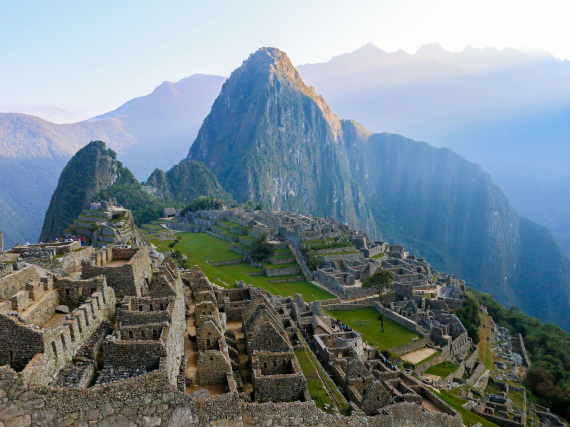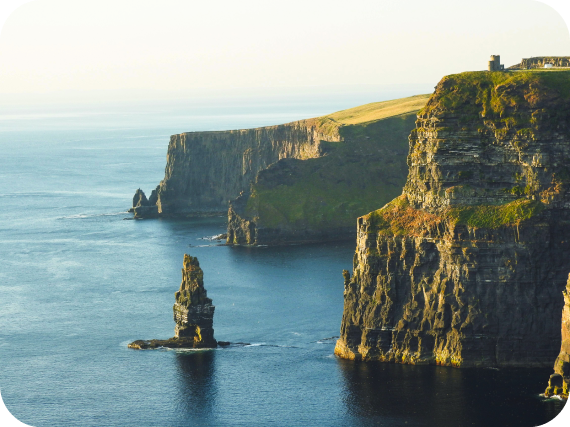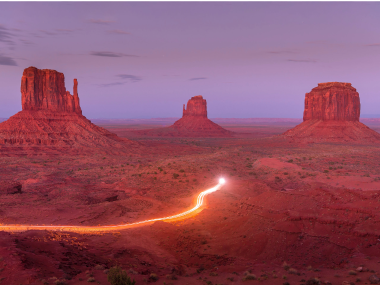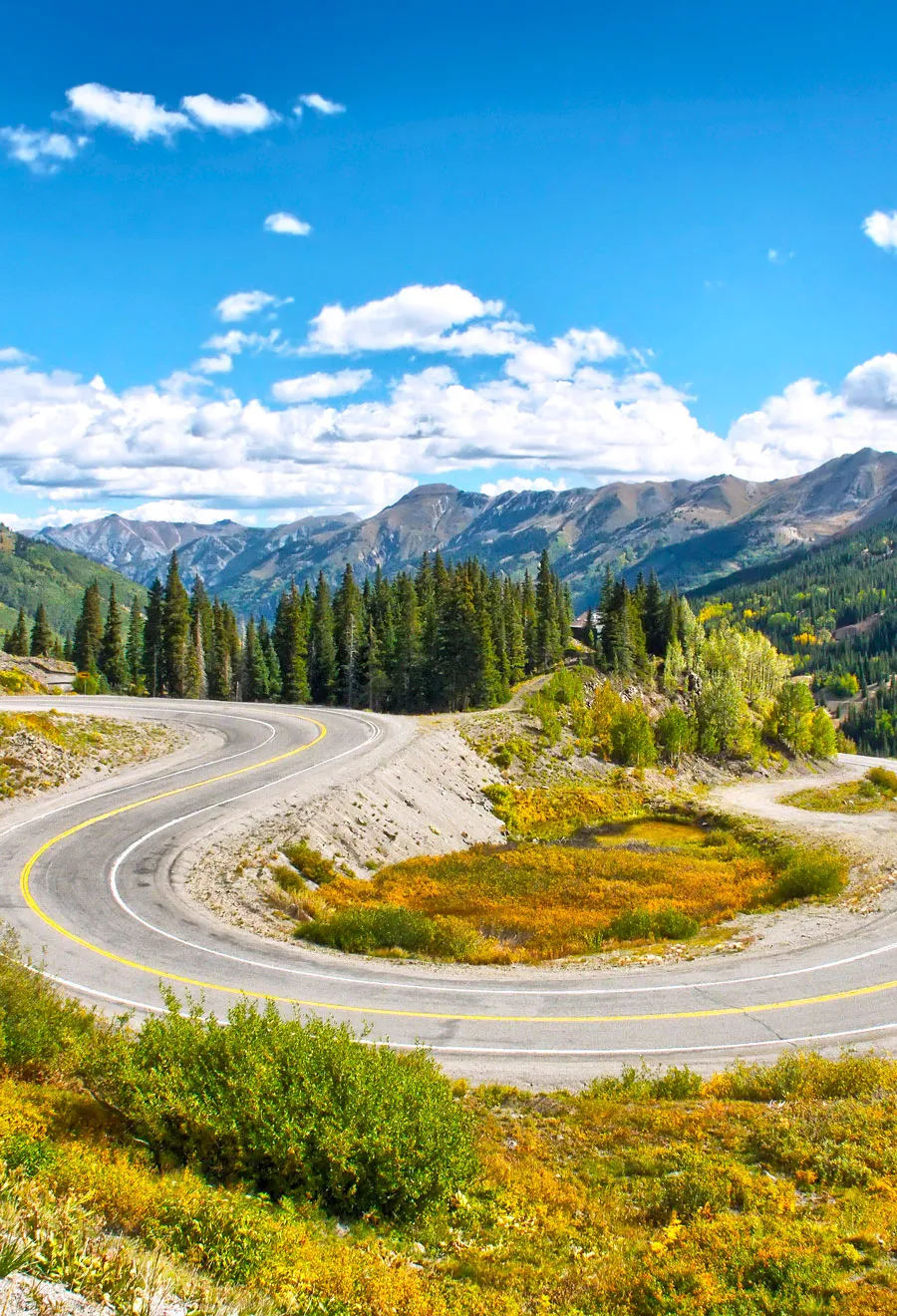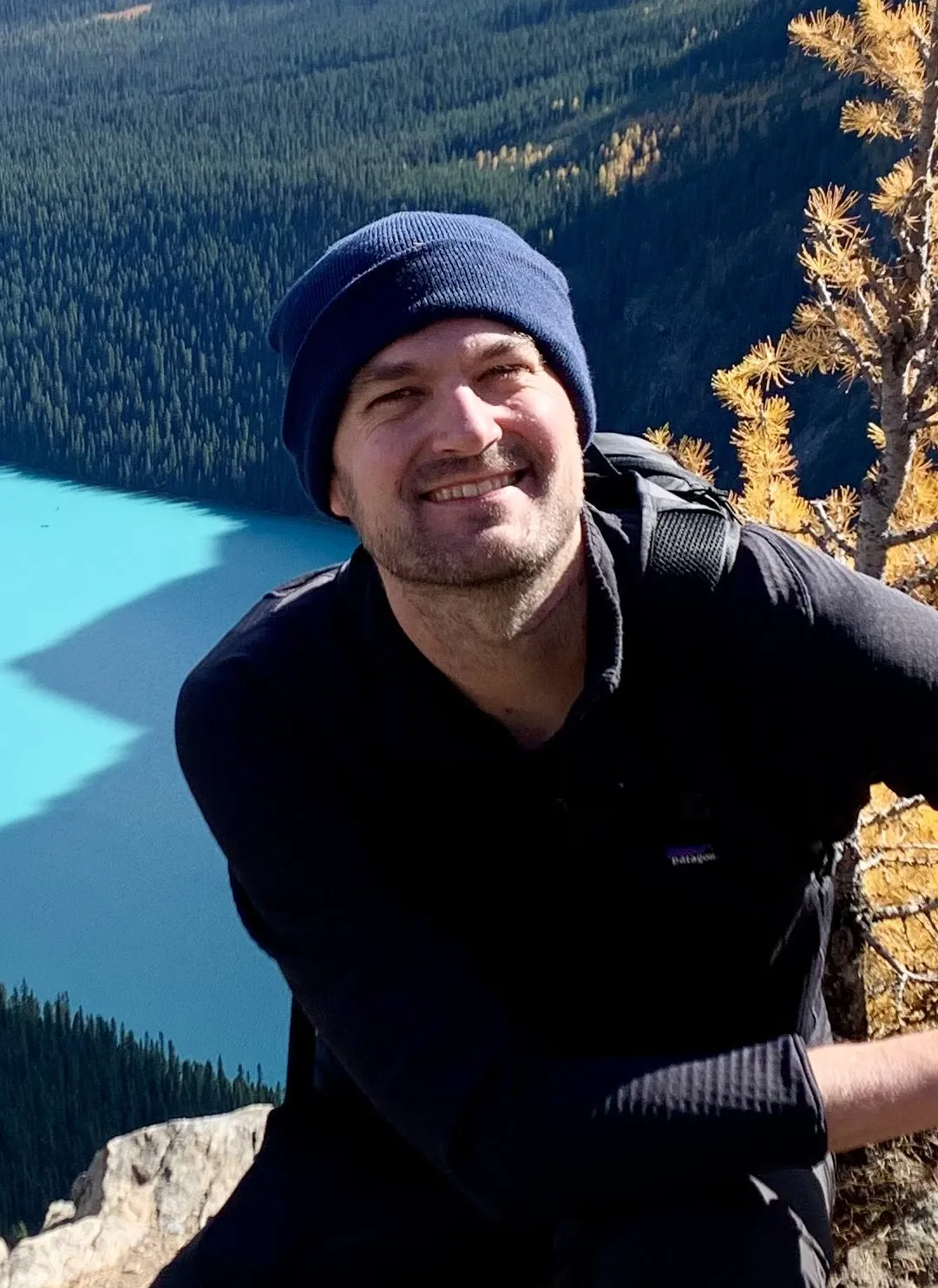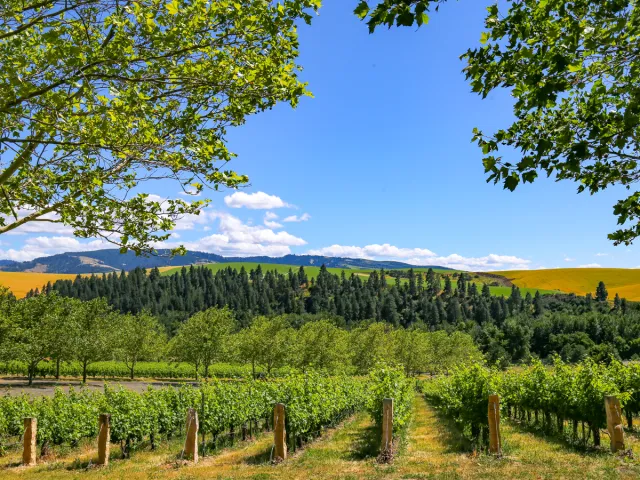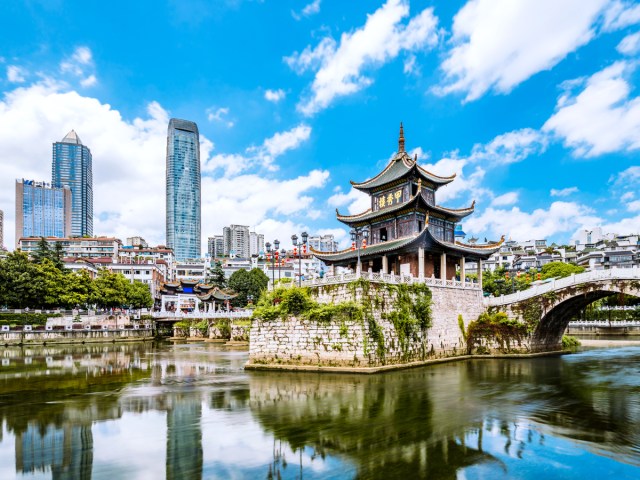This past summer, I had the pleasure of road-tripping through the national parks of the American Southwest. As anyone who’s explored this corner of the country can attest, the scenery was spectacular at every turn, but one of the unexpected highlights of the trip was the stretch of U.S. Route 550 through the mountains of western Colorado, famously called the “Million Dollar Highway.” While I did expect views worthy of that price tag, I found myself fascinated by the history of a road that didn’t seem like it should exist — one where cars (and even RVs and large trucks) precariously hug the mountainside through a series of hairpin turns, nary a guardrail in sight. Here’s what I learned about the Million Dollar Highway and why I think it’s one of America’s most thrilling (and underrated) road trips.
Where Is the Million Dollar Highway?
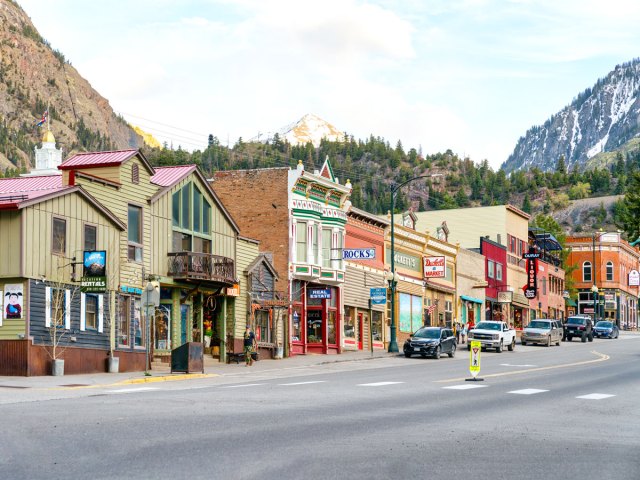
First, the basics: While some may confuse the entirety of U.S. Route 550 with the “Million Dollar Highway” nickname, that moniker technically applies only to a 25-mile stretch of the road in the San Juan Mountains, between the charming mountain towns of Ouray, about a 45-minute drive south of Montrose, and Silverton.
U.S. 550 itself is an offshoot of U.S. Route 50; it begins north of Albuquerque and continues north to Montrose, where it rejoins Route 50. If you’re flying to the region, the closest airports are Montrose/Telluride Regional Airport or Durango-La Plata County Airport. Otherwise, it’s about a six-hour drive from Denver.
The Million Dollar Highway is also part of a larger, 236-mile loop around southwest Colorado, known as the San Juan Skyway, which takes around six hours to drive in its entirety. The route is celebrated not only for the scenic mountain views, but also for its history — near Cortez, you’ll find Mesa Verde National Park, home of the cliff dwellings of the Ancestral Puebloans and one of the original 12 UNESCO World Heritage Sites.
Why Is It Called the Million Dollar Highway?
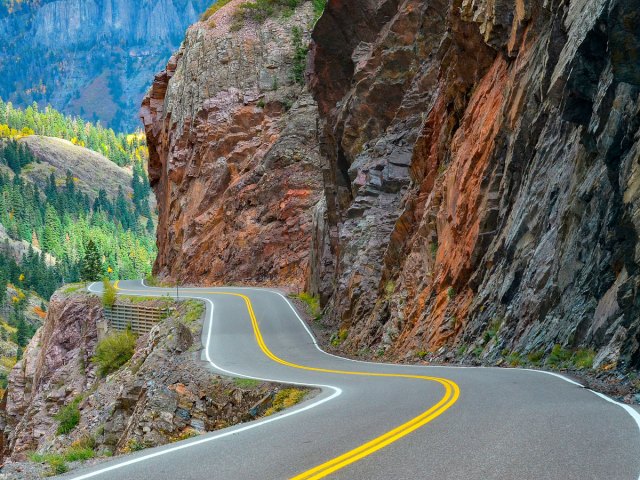
It depends on whom you ask. While no one knows the exact origins of the nickname, several theories have popped up. One claims that building the road in the 1930s cost a whopping $1 million per mile (equivalent to over $19 million today); according to another, the gravel used in its construction was worth a million dollars because it was rich in gold and silver ore from the nearby mines. But my favorite theory is that an early driver found the experience so harrowing that he swore he wouldn’t drive it again — even for a million bucks.
The road dates back to 1880, when developer Otto Mears began building a toll road for wagons and stagecoaches to connect the area’s mines. Crews toiled away, blasting through the solid rock to build the original 8.5-mile portion of the road in 1883. It was extended several times before the road was rebuilt in the 1920s for automobiles and became part of the federal highway system.
An Epic Road Trip
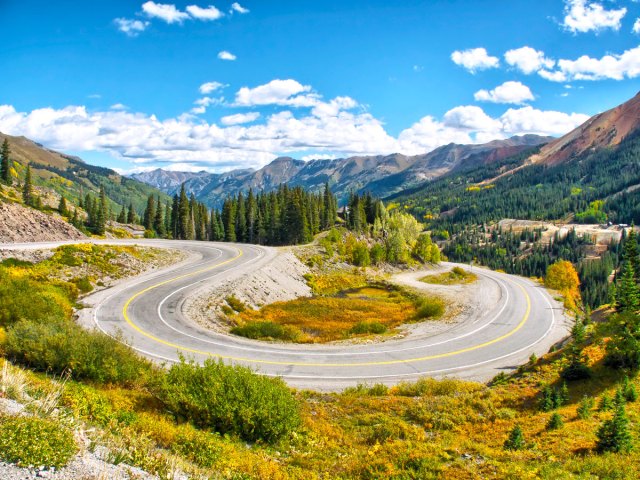
Fast-forward to June 2025: My day started in Durango (one of our favorite under-the-radar cities for U.S. history lovers), where I joined the San Juan Skyway (aka U.S. 550) and headed north. Even a few minutes after setting off, it was difficult to keep my eyes on the steering wheel, with the scenery becoming more and more breathtaking as I ascended through the San Juan National Forest. If you get hungry soon after hitting the road, like I did, don’t miss the opportunity for a pit stop at the James Ranch Market and Grill (or grab some excellent sandwiches and cheese to enjoy later).
While I gradually gained elevation over the next 30 miles or so, stopping at a couple of gorgeous lookouts along the way, Silverton was where the real fun started. This former gold mining town, located at 9,300 feet above sea level, sprang up in the 1870s and features many well-preserved Victorian buildings from that era. It’s also where the Million Dollar Highway officially begins, with the drive through the Red Mountain Pass, whose name comes from the iron oxide in the surrounding slopes. (It’s worth noting here that some sources say that, technically speaking, the Million Dollar name refers to a shorter 12-mile stretch that begins at the summit of this pass down through the Uncompahgre Gorge.)
This is also where it started to dawn on me why some consider the Million Dollar Highway one of the most dangerous roads in America. I knew it was time to keep my eyes glued to the road and let my passengers take in the views (and plenty of photos for me to enjoy later).
As I drove through a series of hair-raising switchbacks, I also thought there was no way this road was designed for two-way traffic. In some areas, it hugged the side of the mountains so closely that it didn’t leave room to install guardrails — one wrong move could lead to you tumbling over the side of a cliff. Thankfully, in these stretches the speed limit is as low as 10 mph, and the other drivers I encountered were taking it slow. I was surprised to see even a few commercial trucks driving the route — piloting one of those big rigs through this pass isn’t a job I’d sign up for anytime soon.
I was thankful to be heading north, at least as a first-timer. Descending about 3,000 feet from the summit of Red Mountain Pass into the Uncompahgre Gorge, just south of where the Million Dollar stretch ends in Ouray, my car hugged the inside of the road, closer to the mountains. Those heading south from Ouray drove along the edge of the road without any guardrails.
Though it’s only 23 miles between Silverton and Ouray, it takes about 45 minutes to drive between the two towns thanks to all the switchbacks and the fact that the speed limit is no higher than 25 mph. After a drive like that, anything else might seem anticlimactic, but Ouray is a wonderful place to spend a few hours stretching your legs (even overnight) and maybe hitting up one of the local craft breweries for a well-deserved pint.
Highlights Near the Million Dollar Highway
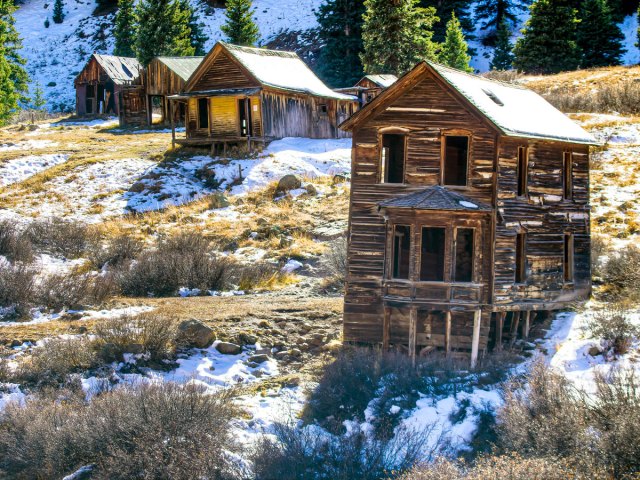
Here are a few other places to consider stopping along your drive:
- Explore Silverton: A more leisurely way to experience the area’s incredible scenery is to take a ride on the historic Durango & Silverton Railroad, a historic narrow-gauge railroad that has been in continuous operation since 1882. Or head underground for a tour of the Old Hundred Gold Mine.
- Animas Forks Ghost Town: Take a 12-mile detour northwest of Silverton to visit what was formerly one of the highest mining camps in North America. As mining profits declined, the town was abandoned by the 1920s, but the remaining buildings have been restored and give visitors a fascinating glimpse into the boomtown’s past.
- Molas Lake Overlook and Campground: This is considered one of Colorado’s prettiest campgrounds, but even if you’re not staying overnight, you can stop to enjoy the views or walk around this 25-acre mountain lake.
- Summit of Red Mountain Pass: When you finally reach the summit of the Million Dollar Highway, take a well-earned breather. There are several pullouts where you can park your car and take in the surrounding splendor.
- Explore Ouray: It’s easy to see why they call this town the “Switzerland of America.” From the charming downtown boxed in by soaring mountains on three sides, you can explore attractions including Box Cañon Falls, a thundering waterfall that spills thousands of gallons of water into a narrow canyon every minute.
- Black Canyon of the Gunnison: Keep driving about an hour past Ouray to visit one of America’s most underrated national parks, where black canyon walls plummet hundreds of feet straight down to the canyon floor. With fewer crowds, you’ll find many corners of the park to enjoy by yourself.
When To Visit
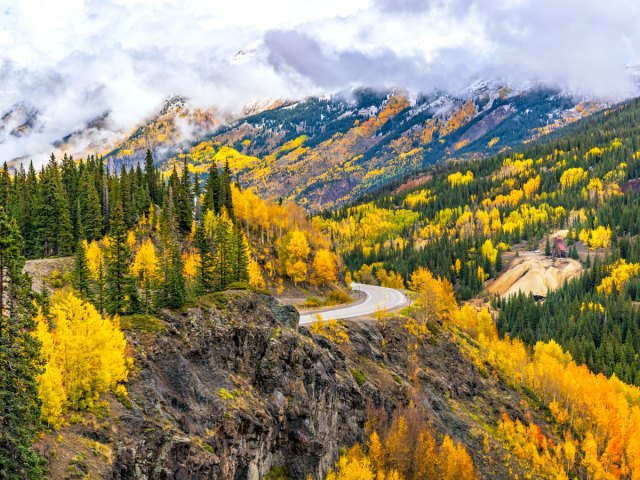
Incredibly, the Million Dollar Highway is open year-round, but as you’d expect at these elevations, the road is frequently closed in winter due to snow, ice, and occasional rockslides. Some attractions near the highway may also be inaccessible during the winter months. Be sure to check the Colorado Department of Transportation website for any seasonal closures. In general, winter is a more hazardous time to drive, so consider making the trip in summer, when the weather is best, or fall, when the glorious foliage makes the journey even more breathtaking.
More from our network
Daily Passport is part of Inbox Studio, which publishes content that uplifts, informs, and inspires.

